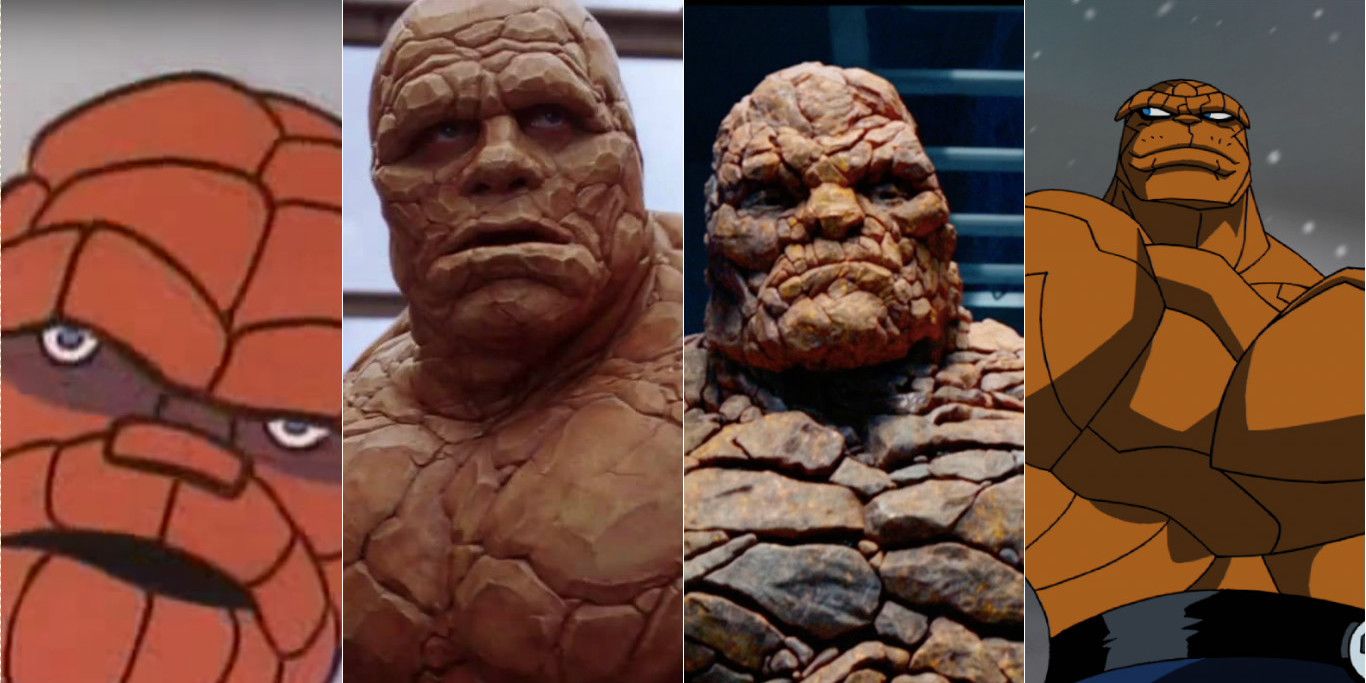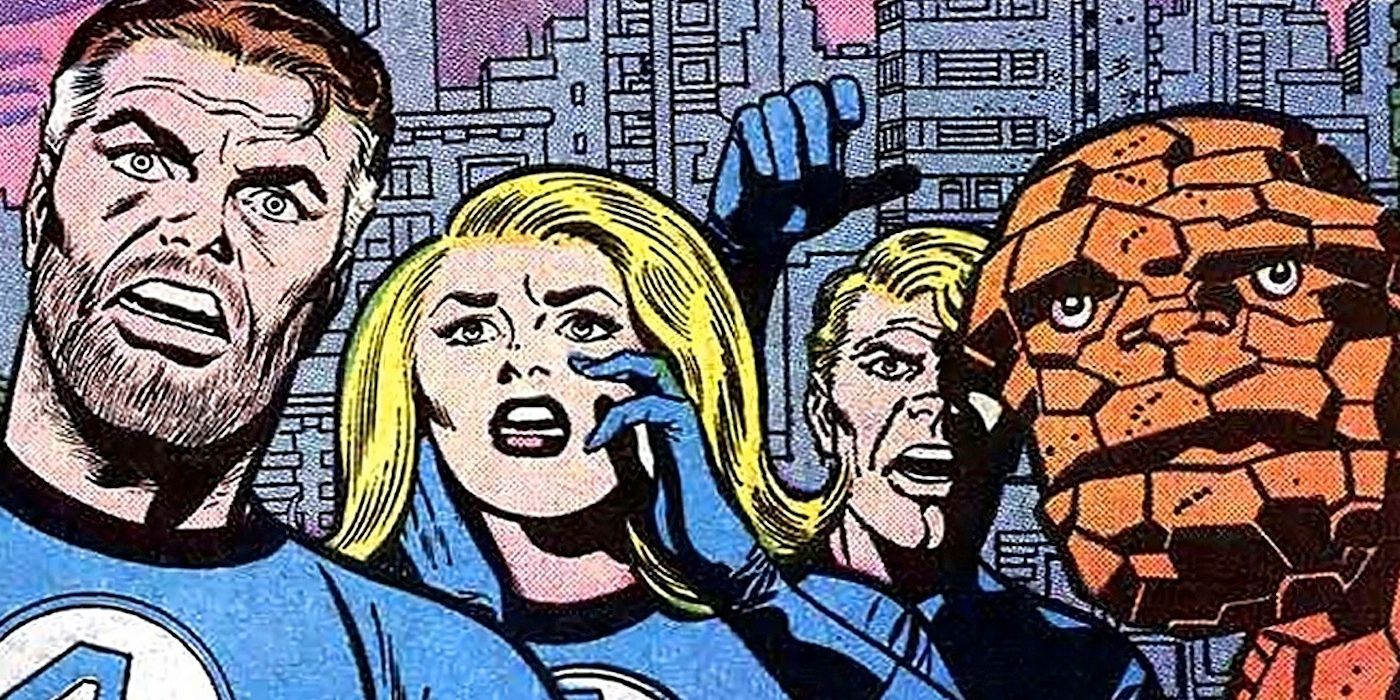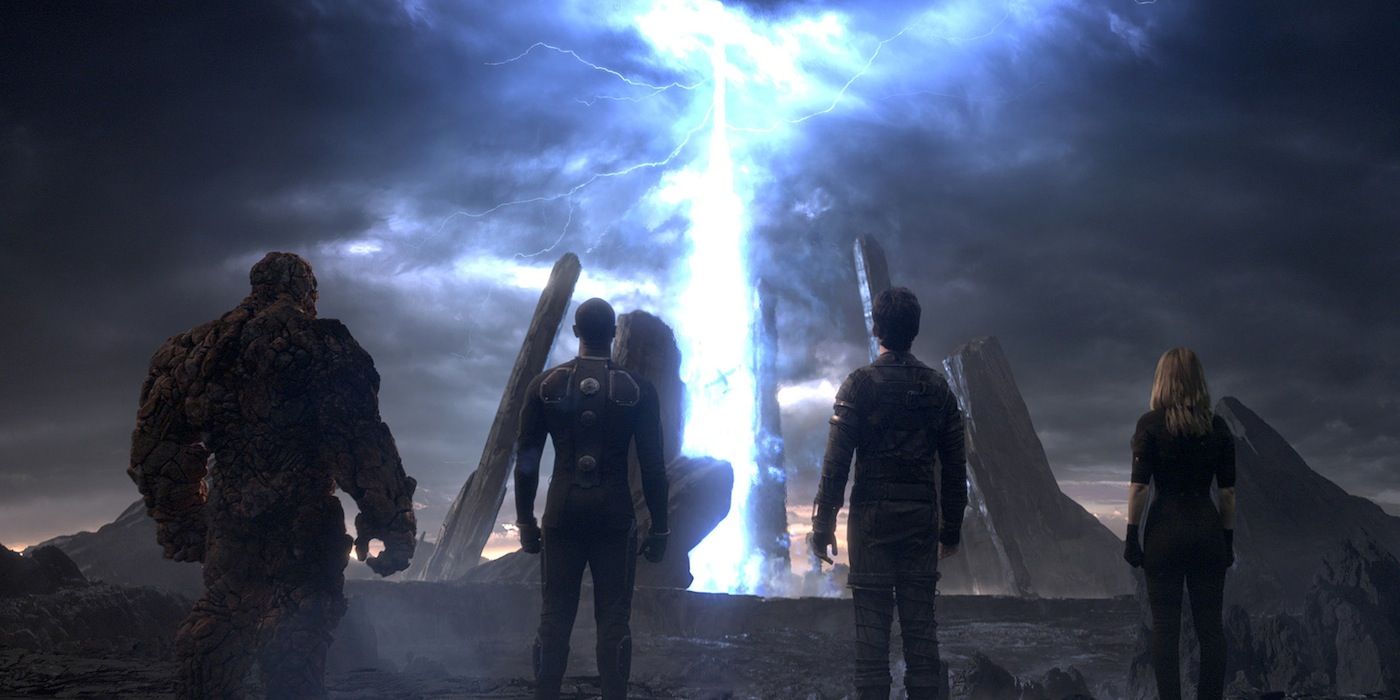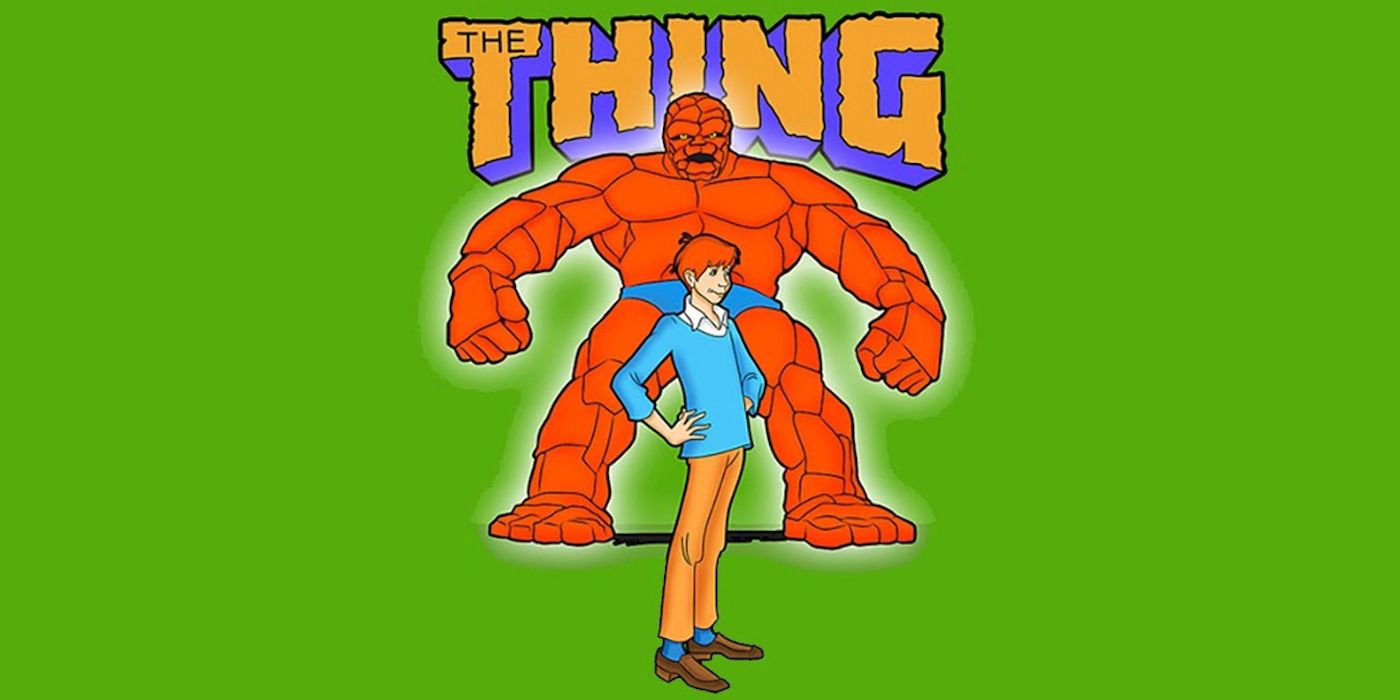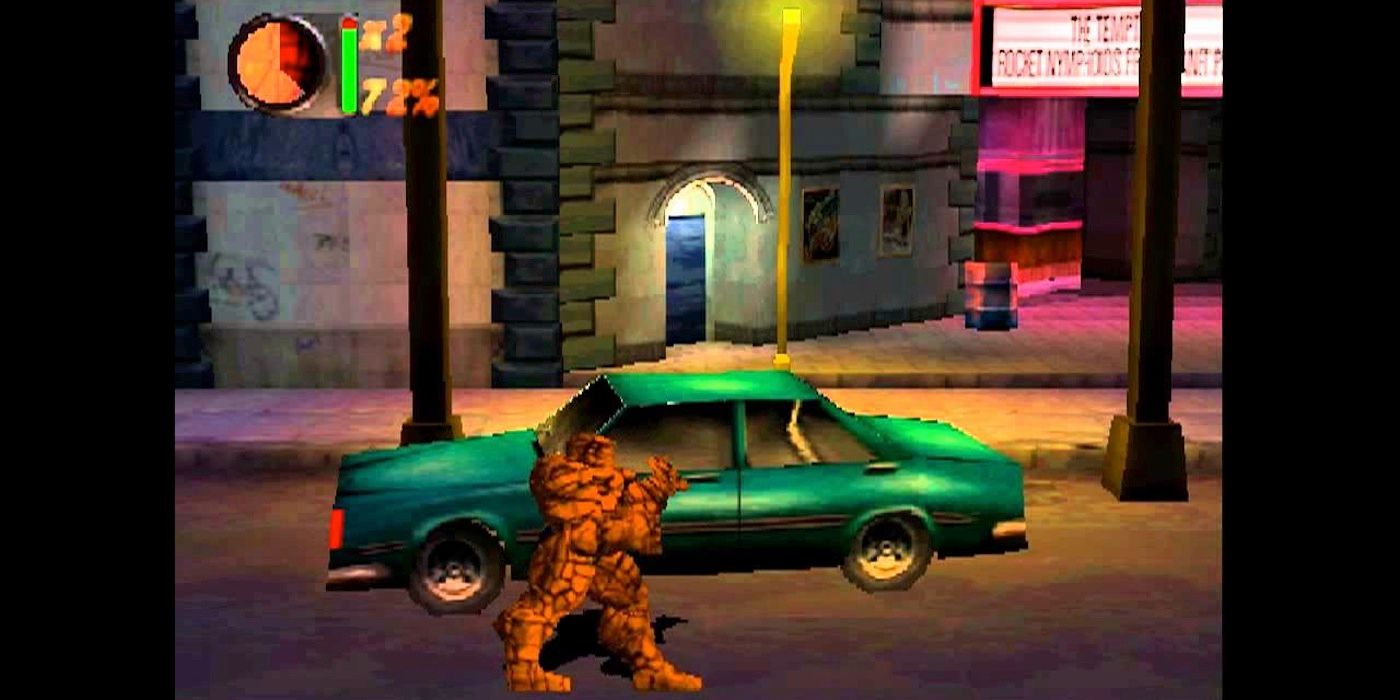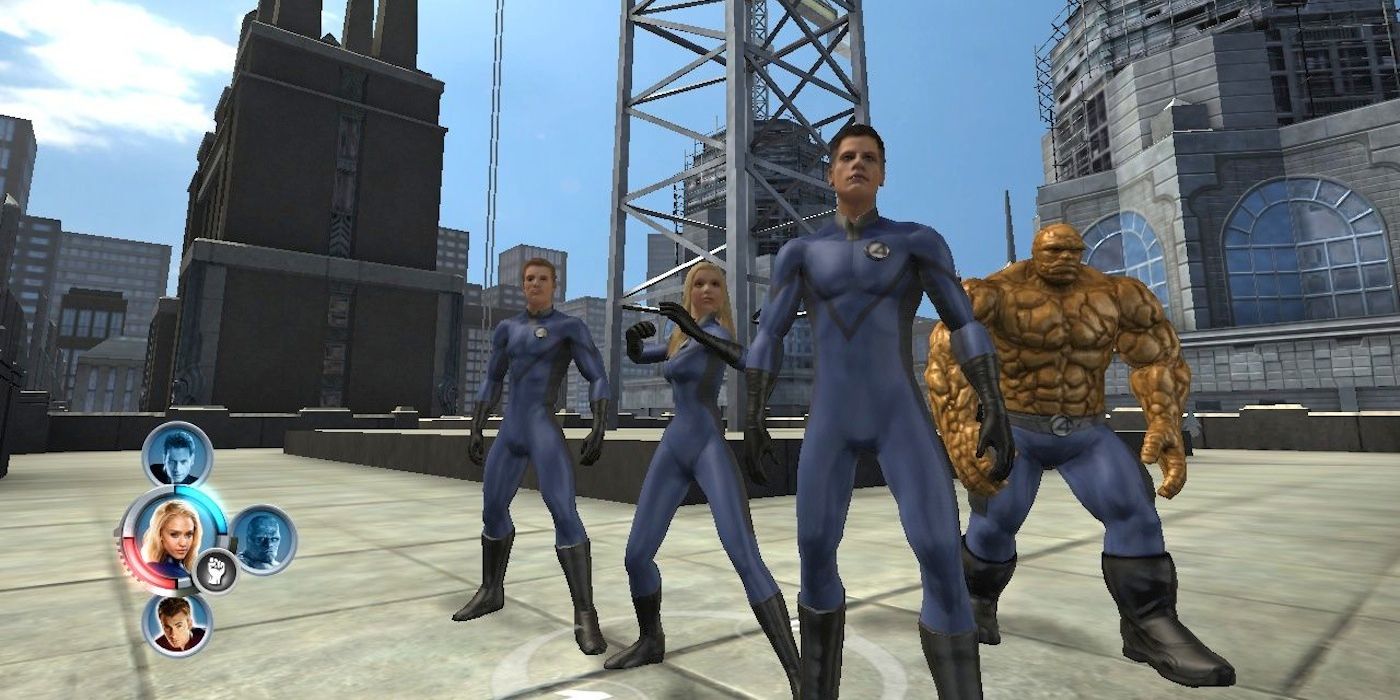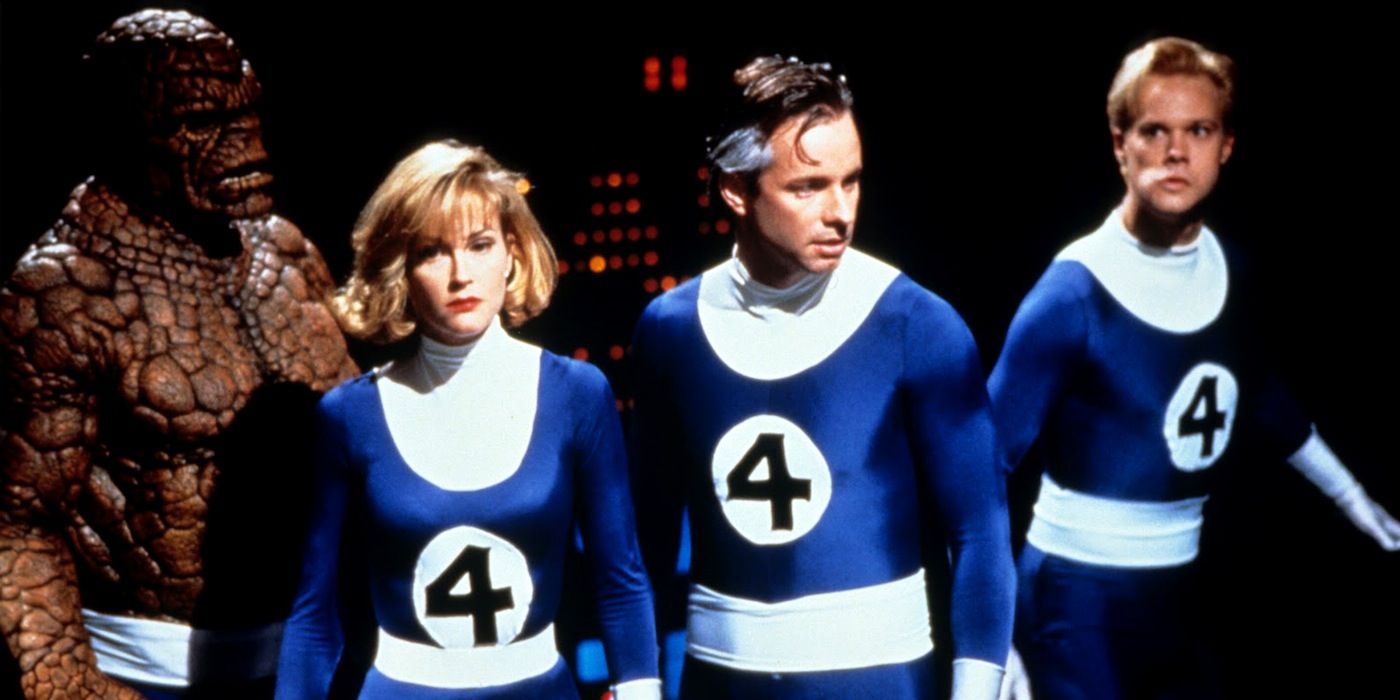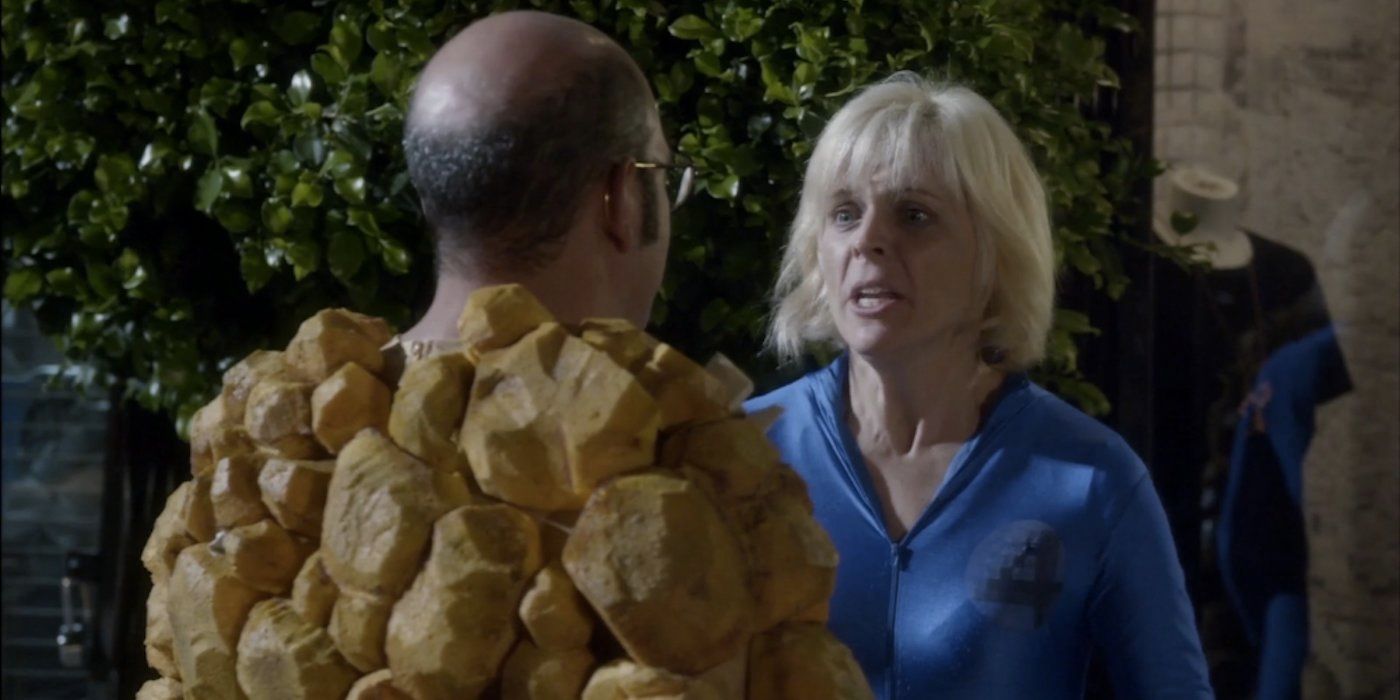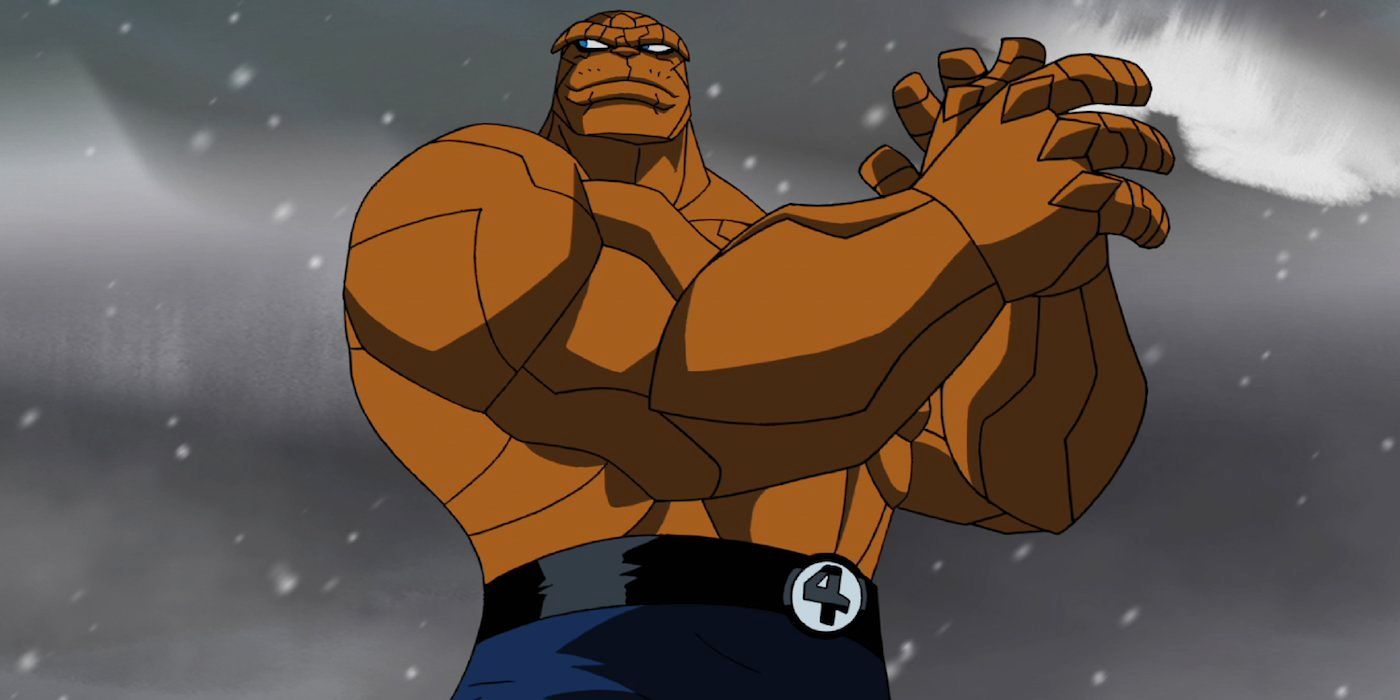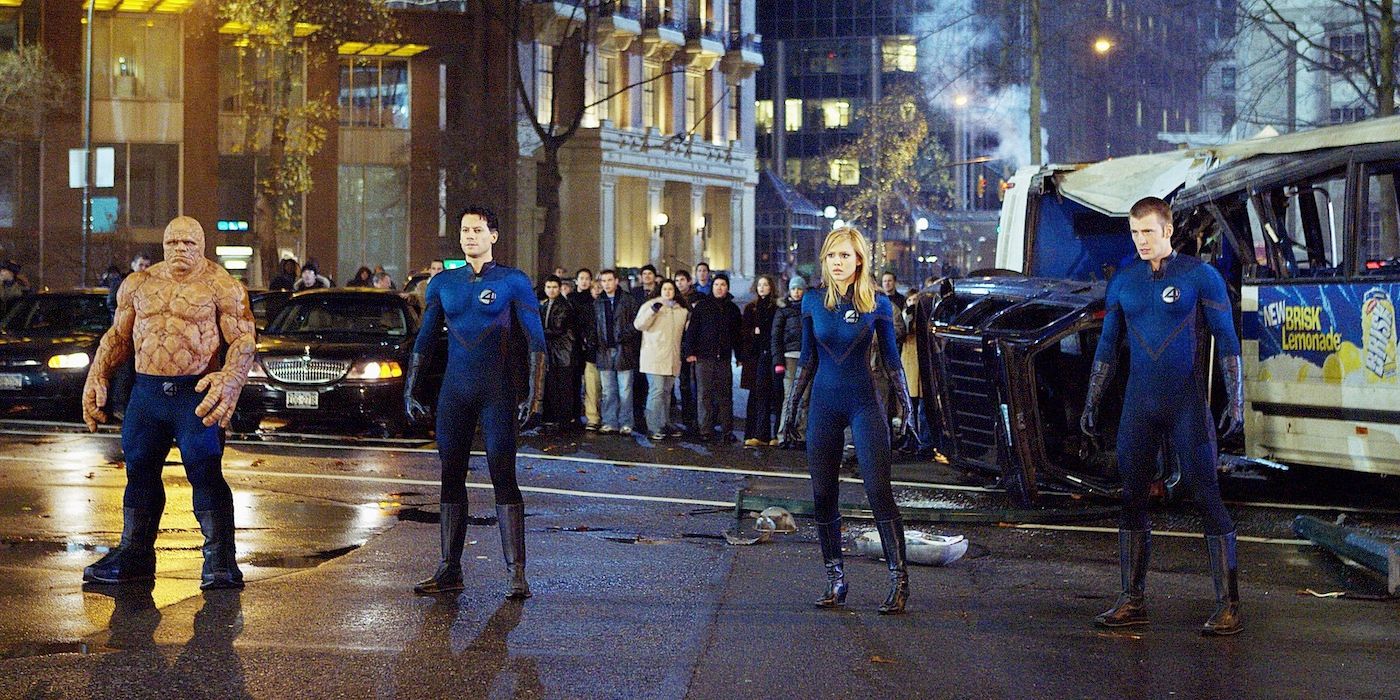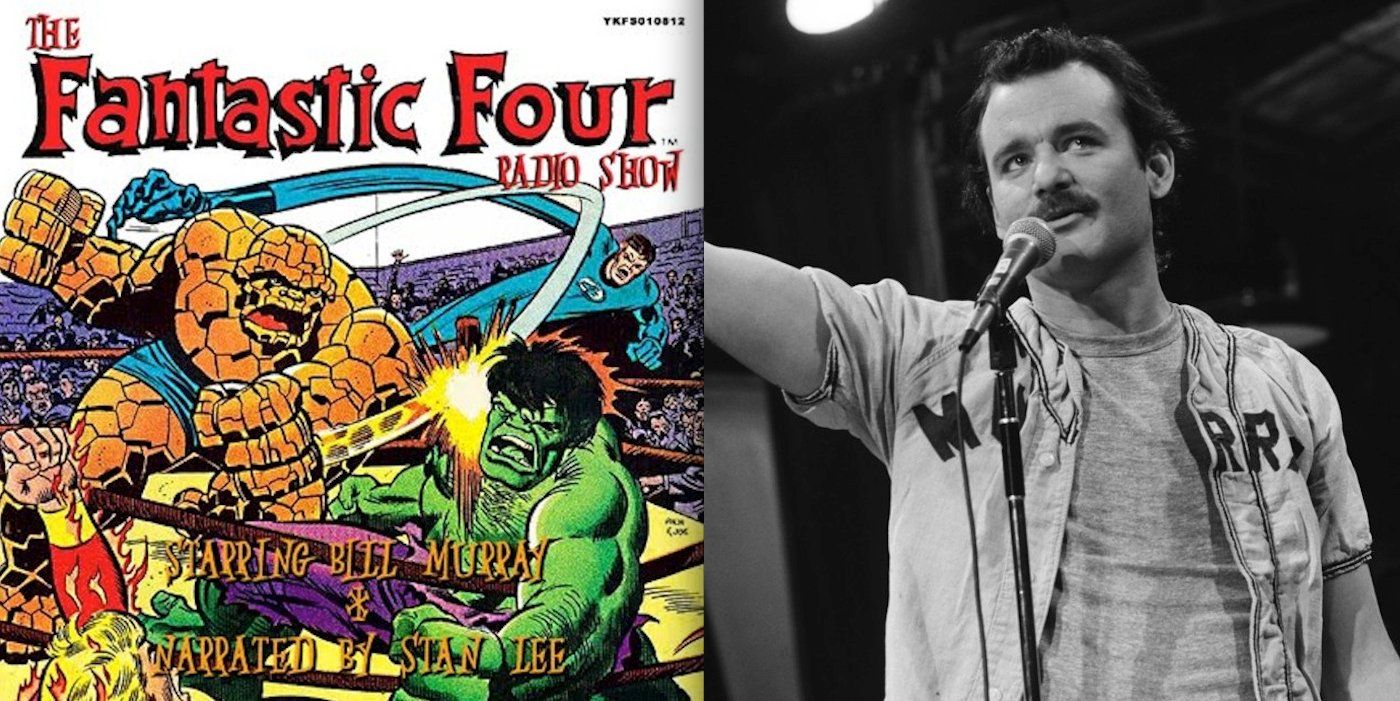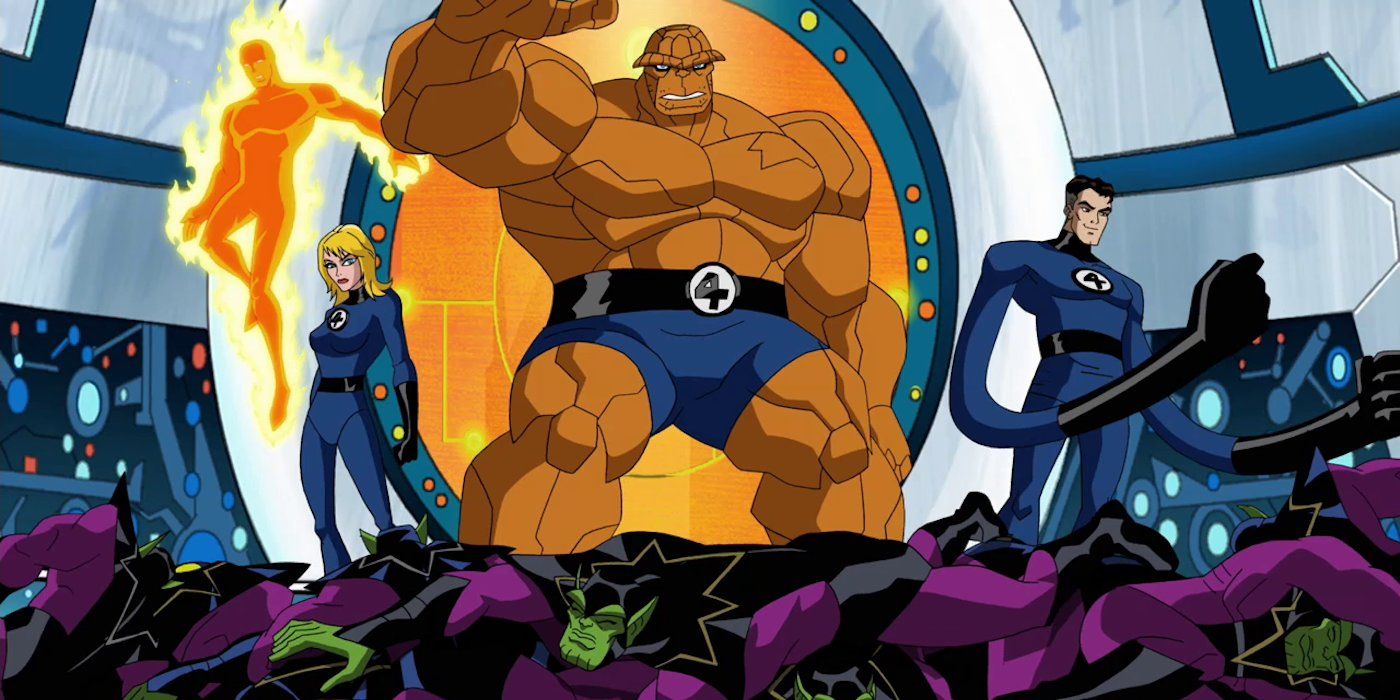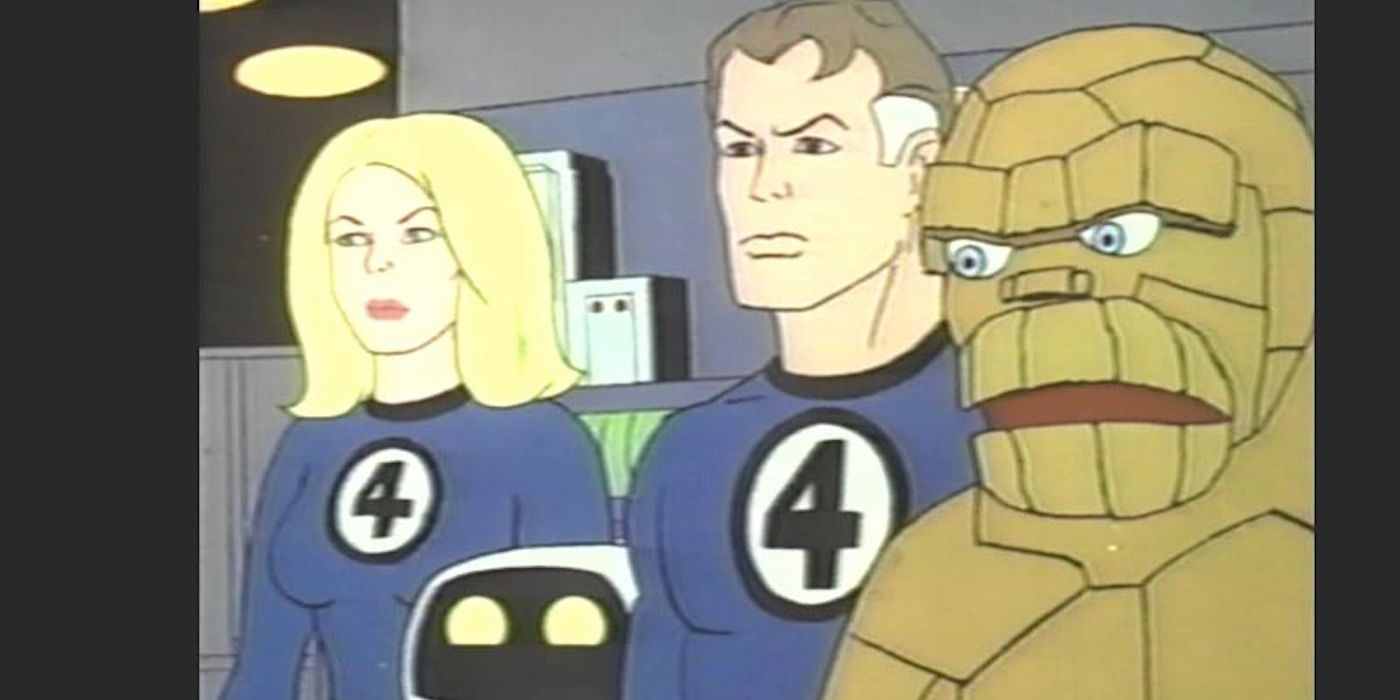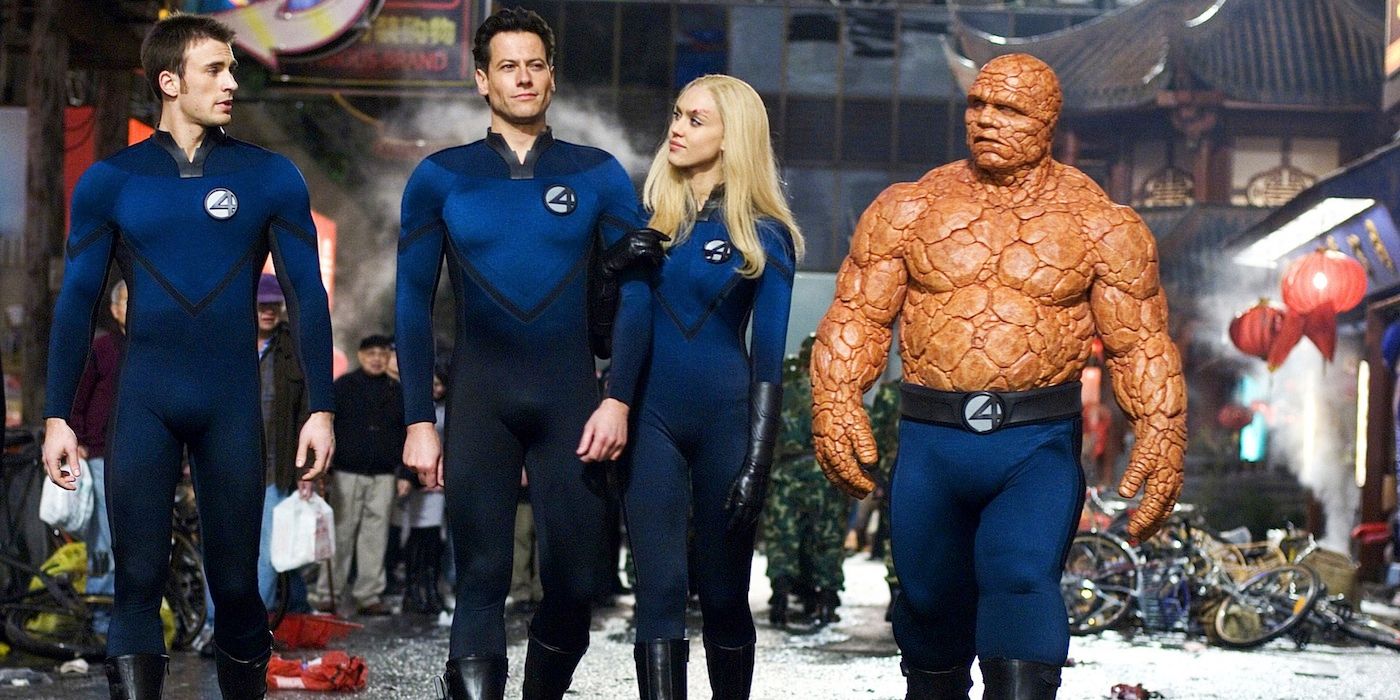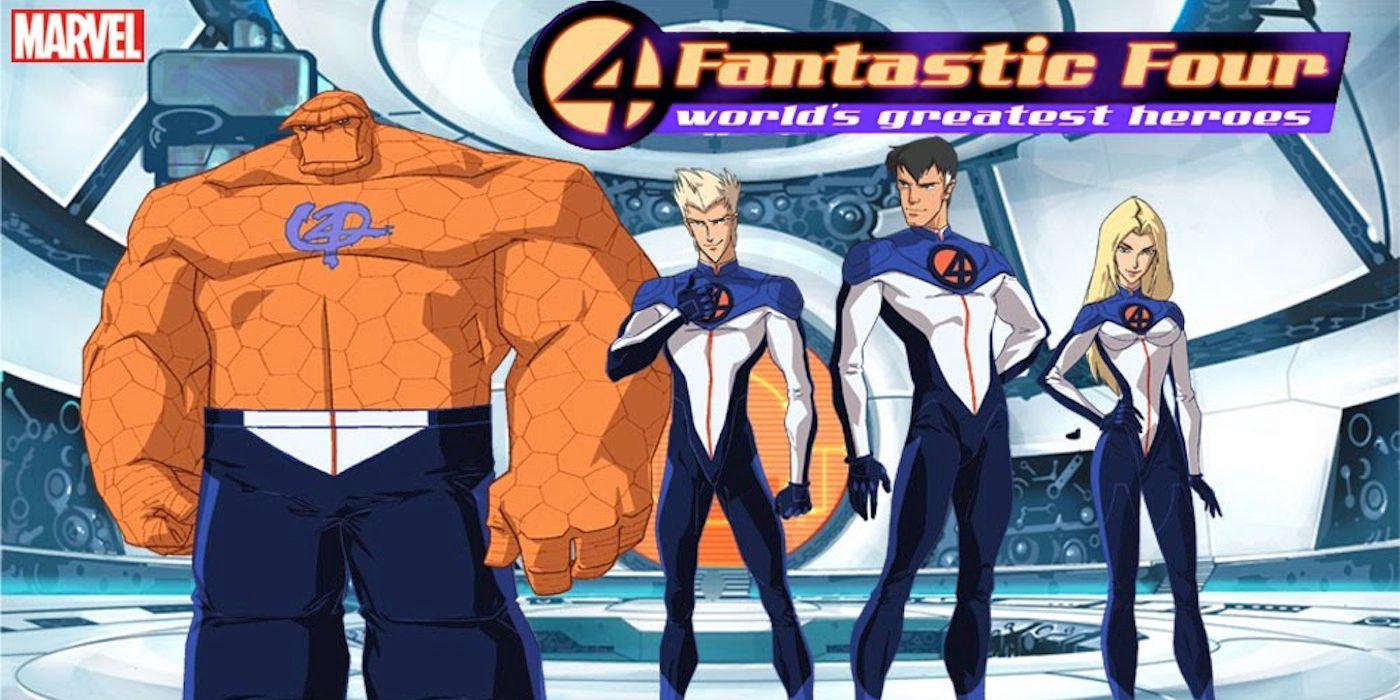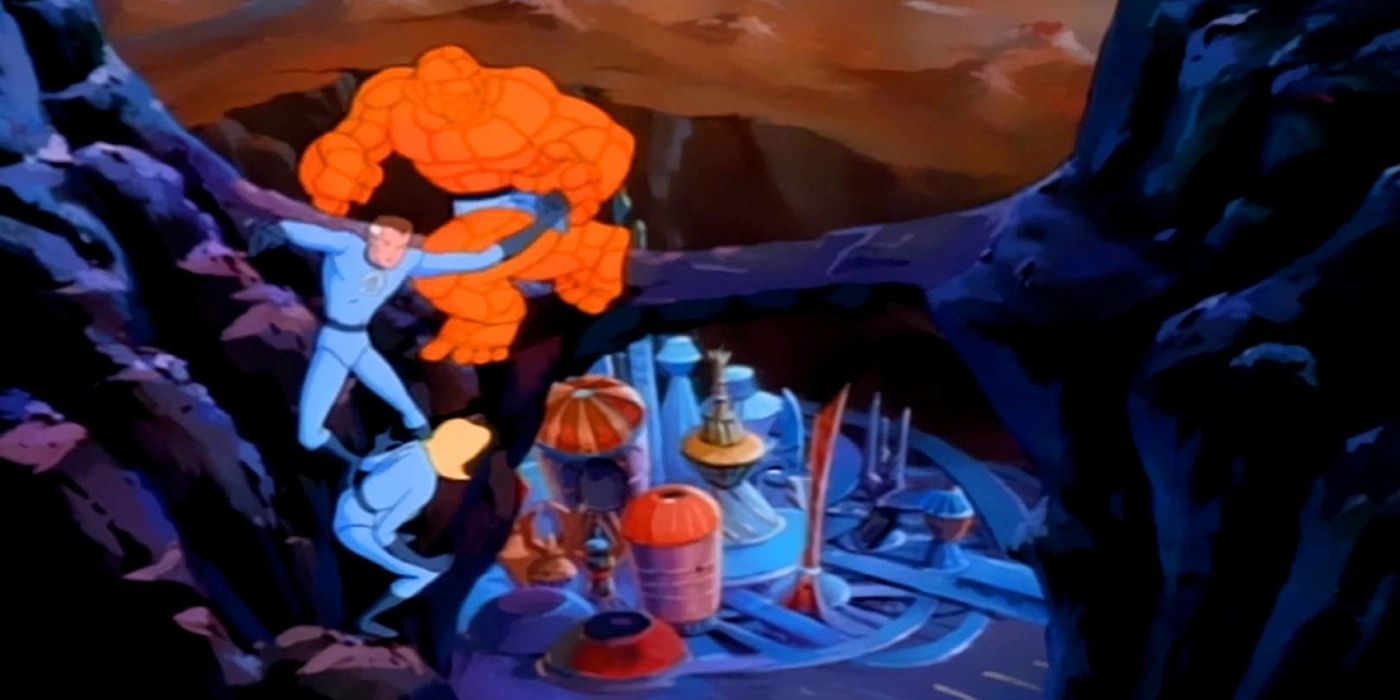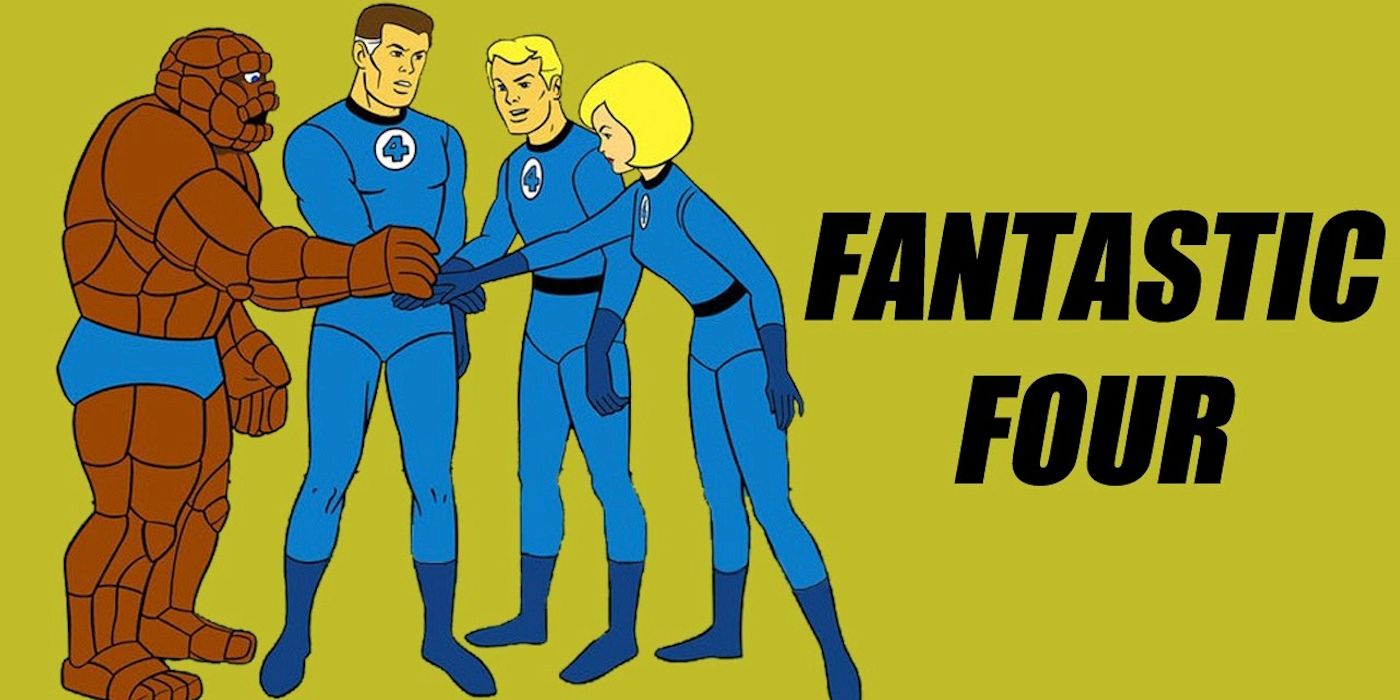Debuting in 1961, the Fantastic Four helped usher in a new level of realism in comic books. Stan Lee and Jack Kirby were commissioned to create Marvel’s answer to the Justice League, but their process instead led to something more groundbreaking, more unique. “The characters would be the kind of characters I could personally relate to,” Lee explained in 1974, “They’d be flesh and blood, they’d have their faults and foibles, they’d be fallible and feisty… inside their colorful, costumed booties they’d still have feet of clay.” This creative risk paid off, as Marvel turned into an industry mecca overnight, and the Fantastic Four turned into “The World’s Greatest Comic Book!” Icons like Spider-Man, Doctor Strange, and The Avengers quickly followed suit.
Unfortunately, success on the page has not led to success on the screen. In the six decades since their debut, the Fantastic Four have been subject to one troubled iteration after another; be it on television, video games, or feature films. Some have been too kitschy, some have been too liberal with the source material, and some have been just plain grimm. Still, as Marvel’s flagship family (and a trending interest of MCU director Scott Derrickson), the Fantastic Four deserve to be celebrated. We’ve decided to suit up, head down to Baxter Building, and do just that.
Here is Screen Rant’s Every Adaptation of The Fantastic Four, Ranked from Worst to Best.
15. Fan4stic Four (2015)
Given the tepid responses to the first two Fantastic Four films, it seemed like the 2015 reboot had nowhere to go but up. Sadly, director Josh Trank proved the entire world wrong, and delivered a superhero flick so bad it caused fans to contemplate whether or not it was the worst film ever of its kind. And considering the talent of its young cast: Miles Teller, Kate Mara, Michael B. Jordan and Jamie Bell, that’s no small feat. Each of them is painfully underused in their iconic roles, which are strung together by a script that lapses in logic, continuity, and overall coherency at a record pace.
What was supposed to be a gritty reinvention of the Fantastic Four (stylized here as FAN4STIC) instead turned into a production war, as Trank and 20th Century Fox bickered over final cut, reshoots, and the overall shaping of the film. It’s tough to say whether we would’ve gotten a better product had one of the parties been more agreeable, but either way, this emotionally detached stinker is the basement dweller of the Fantastic Four brand. And that’s saying something.
14. Fred And Barney Meet The Thing (NBC Cartoon, 1979)
Hanna-Barbera liked to retool their stale cartoons in the 1970s, and would often pair two completely different properties in the hopes of rejuvenated success. The Flintstones knew this better than most, as headliners Fred Flintstone and Barney Rubble spent the decade getting paired with everyone from Schmoo to surfer-teen versions of Pebbles and Bam Bam. The lowpoint of these experiments, however, wouldn’t come until the two cavemen “met” The Thing for 13 episodes in 1979.
The execution was actually worse than the title would have you believe. Not only did Fred and Barney not interact with The Thing (they starred in separated segments), but the Fantastic Four character was mutilated into becoming Benjy Grimm: a redheaded teenager who only took rock form when he put on a special ring. He solved mysteries, fought the biker punks from the Yancy Street Gang, and thoroughly disappointed anyone who was a fan of Ben Grimm and the Fantastic Four. The less said about this garish misstep, the better.
You can check out the title credits to each episode here.
13. Fantastic Four (Video Game, 1997)
The premise behind this Fantastic Four game is promising enough: pick between any of the core members (plus She-Hulk) and proceed to beat up bad guys until the level is complete. You’re also able to change between characters at any time in the level. The problem is, this brief synopsis describes not just the basics, but the entire, boorish simplicity of this 1997 video game. Select a character, select their non-force-draining special moves, rinse and repeat.
This is complimented by strange saxophone music that really does not match the material at all, while the graphics serve to, according to GameSpot, “fit in perfectly with the rest of the game’s mediocre feel.” The story goes that Acclaim Entertainment knew the game was terrible, but because of the way Marvel’s license was written, it would’ve cost them more to shelve it than simply release it. As a result, we now have a PS1 game whose biggest perk is the mockery it’s inspired online. The best remarks come from Pop Culture Maven, who calls it “craptacular,” while IGN gave it a score of “Unbearable.”
12. Fantastic Four (2005 Video Game)
A slight improvement over the 1997 game, this beat 'em up outing was released in conjunction with the 2005 Fantastic Four film. It too offers the ability to switch between powers and the four main characters on your way through fighting Doctor Doom's legion of henchmen. Unfortunately, there’s also some glaring flaws to be found here, particularly in the limited range of actions you can perform with each hero.
Whether playing as Reed Richards or Sue Storm, the same combination of moves and objectives can start to get a little stale as one nears the end of the game. The characters, each of whom look like their film counterpart, aren't given especially flattering graphics, and often times they can be seen going through solid objects in the frame. Not unlike the film from which it's based, this video game offers a pedestrian time that could've been much more given its promising source material. Granted, we will give them credit for getting rid of that creepy saxophone music.
11. The Fantastic Four (Unreleased Film, 1994)
In 1983, producer Bernd Eichinger contacted Stan Lee about obtaining the rights to a Fantastic Four film. Eichinger was confident he could turn the property into a blockbuster hit, having just wrapped production on the effects-heavy adaptation of The Neverending Story. But this initial surge quickly turned to a crawl, and by 1992, Eichinger realized his option would expire if he didn’t act fast. He turned to B-movie expert Roger Corman in desperation, and what he got was a film that was considered so bad it never saw the light of day (at least, legally). Check out the documentary Doomed: The Untold Story of Roger Corman’s The Fantastic Four (2015) for more.
Yes, the film is bad. The effects are laughable, the performances are campier than toasted marshmallows, and you can’t really make out what Doctor Doom is saying. But in comparison to the films that followed, there’s something undeniably charming about The Fantastic Four (1994)-- it’s as adoring of the comics as it is inept. It offers the same kind of ironic enjoyment that comes with schlock like Hard Ticket to Hawaii (1987) or Trolls II (1990), and it can currently be found on YouTube.
11. Fantastic 4: An Action Musical (Arrested Development, 2013)
Granted, this isn't an official FF adaptation, but this Arrested Development parody is too good to leave off the list. In the 2013 episodes “Smashed” and “Queen B,” Dr. Tobias Fünke (David Cross) bumps into the same woman who played Sue Storm in the 1994 version of Fantastic Four: DeBrie Bardeaux. Inspired by this, Tobias decides to recast her as Sue and create a musical adaptation of the team that gets tied up in legal issues-- exactly like the 1994 version. They even take to the streets as Sue and Ben Grimm for promotion, but the only thing they get for their troubles are cease-and-desist papers from Marvel.
There's lots of outrageous humor ("Daddy needs to get his rocks off!") to be had, the least of which leads to a rehab clinic where Tobias and DeBrie stage the musical-- or more specifically, a horrific, eight minute mess of a musical. To make matters even more bizarre, there’s a cameo from future Fan4stic director Josh Trank. And yes, this is the best Fantastic Four project with his name on it.
10. Hulk and the Agents of S.M.A.S.H. (Disney XD, 2013-15)
Hulk and the Agents of S.M.A.S.H. materialized in the wake of Disney XD's Avengers (2010-13) series, and the intention was to make Hulk more viable for kids. The show's format was an odd one, as Bruce Banner sidekick Rick Jones hosted an online reality that followed Hulk and his additional team members (She-Hulk, Skaar, Red Hulk and A-Bomb) as they saved the day. Their moniker, aside from being Hulk's signature phrase, is an acronym for Supreme Military Agency of Super Humans.
Critical reception to the show was mixed, as many felt the use of slapstick humor and cheap jokes narrowed its audience to younger ages. Still, there a few guest appearances worth mentioning, including one by the Fantastic Four in the two-part episode "Monsters No More" (2014). Here, the team aids Hulk in being perceived as a hero instead of a public threat-- at least, before an attack from Abomination and company puts the celebration on hold. It's a pleasant enough watch, with an added Ben Grimm cameo in the series finale "Planet Monster (Part 2)."
8. Fantastic Four (2005)
After getting it right with X-Men (2000) and so very wrong with Daredevil (2003), 20th Century Fox decided to wheel out their reboot of Fantastic Four (2005)-- a superhero film that’s almost aggressive in its mediocrity. On a technical sense, it’s nice seeing the team’s origin story told with decent visual effects. Chris Evans plays Johnny Storm six years before he would assume the shield as Captain America, and he’s cocksure and charming in appropriate spurts.
Beyond that, director Tim Story bungles the essence of the Fantastic Four with, in the words of Rotten Tomatoes, “goofy attempts at humor, subpar acting, and bland storytelling.” Reed Richards (Ian Gruffudd) and Sue Storm (Jessica Alba) are given hokey rom-com material to play, and Ben Grimm (Michael Chiklis) is turned into a neon rockpile that substitutes mopin’ for clobberin’. “Not that bad” is the highest praise that can be awarded the 2005 version of Fantastic Four, and given that Christopher Nolan’s Batman Begins came out a month prior, it's a miracle there was even a sequel.
7. The Fantastic Four (Radio Program, 1975)
Here’s a little known fact: before he starred in Caddyshack (1980), Ghostbusters (1984), and Groundhog Day (1993), Bill Murray spent his days as a member of the Fantastic Four. No fooling. The comedy legend voiced hothead Johnny Storm on this short-lived radio program, alongside actors Bob Maxwell (Reed Richards), Cynthia Adler (Sue Storm), Jim Pappas (Ben Grimm) and Jerry Terheyden (Doctor Doom). Stan Lee provided opening narration for each episode, while stories were often pulled verbatim from early Fantastic Four comic books.
The shows are over-the-top if heard today, but the program actually offers some of the most faithful Fantastic Four adaptations to date. Voice actors accurately captured the team dynamic, and select episodes even had the benefit of guest stars like Ant-Man, Hulk, Nick Fury, and Prince Namor. Sadly, the production only lasted 13 weeks, as low ratings and lack of money eventually took their toll. For anyone intrigued, either by the stories of the enticing idea of Bill Murray being super, you can find them on YouTube or click here to download the first ten episodes.
6. Avengers: Earth’s Mightiest Heroes (Disney XD, 2010-13)
Avengers: Earth's Mightiest Heroes burst on to the scene in 2010, with many proclaiming it to be one of the best Marvel cartoons ever made. In combining the original Lee/Kirby stories with the recent content of the Marvel Cinematic Universe, the series struck a balance that was both welcoming for fanboys and informative for newcomers. It also helped that nearly every iconic hero in the Marvel canon dropped by during these three seasons, from Luke Cage and Wolverine to Iron Fist and, of course, the Fantastic Four.
The team made multiple appearances on Earth’s Mightiest Heroes, most notably in the episodes “The Man Who Stole Tomorrow” (2011), “The Private War of Doctor Doom” (2012), and the series finale “Avengers Assemble!” (2013). In each, The Fantastic Four are given more action than they are actual dialogue, but their contributions remain memorable nonetheless-- especially when they team up with Captain America, The Wasp, and the rest of the crew to bring down Doctor Doom. If given a larger role in the series, this version of the FF would rank even higher.
5. The New Fantastic Four (NBC Cartoon, 1978)
This series is best remembered for ditching Johnny Storm and saddling the Fantastic Four with a little robot named H.E.R.B.I.E. (Humanoid Experimental Robot, B-type, Integrated Electronics). Here, the origin story says that only three voyager ships went into space, and after receiving power through cosmic rays, Reed Richards, Sue Storm, and Ben Grimm did the whole superhero thing with H.E.R.B.I.E. as their fourth member-- hence the title The New Fantastic Four. Initial rumors circulated as to why Johnny was left out of the mix, including a concern that kids would set themselves on fire trying to imitate him.
But the real reason Johnny got the axe was that Universal was busy developing a live-action Human Torch series. Obviously, it was a flame that never caught on with viewers. His subsequent absence in The New Fantastic Four is a sizable flaw-- not only was H.E.R.B.I.E. (voiced by animation legend Frank Welker) a weak substitution, but the character also became something of a running joke for comic fans.
Taken in stride, however, the rest of the series still makes for a fun, if not kitschy watch that benefits from Jack Kirby’s colorful storyboards.
4. Fantastic Four: Rise of the Silver Surfer (2007)
Generally speaking, this sequel to 2005’s Fantastic Four shares its flaws, from the limp chemistry of the actors to the forced sitcom muck (coincidence, romantic bickering) the actors must endure. But Rise of the Silver Surfer (2007), perhaps due to the low expectations that fan had heading into release, still manages to improve on the original-- and much of that has to do with the titular character.
The treatment of Silver Surfer, physically played by Doug Jones and vocally by Laurence Fishburne, is one of the film’s pleasant surprises. He’s a mysterious force to be reckoned with, and his coolly menacing interactions with the team give the plot an extra kick of excitement. There’s also the initial fight between Surfer and Johnny Storm, which isn’t half bad, even by today’s standards.
That it is number four on this list isn’t so much a testament to its quality so much as it is the lack of quality in the other live-action films.
3. Fantastic Four: World’s Greatest Heroes (Cartoon Network, 2005)
Those who didn’t watch Cartoon Network in 2005 probably missed the eight episodes that made up Fantastic Four: World’s Greatest Heroes. Released in the wake of the live-action film, this series ignored nearly all of the film’s changes, and opted for a more chic, contemporary approach that showed in the animation. Traditional cel drawings meshed with CGI backgrounds in each episode, ramping up the eccentricity, and occasionally spilling over into too much style (Johnny Storm’s hair wasn’t far off from that of Johnny Bravo).
Where the show made up for this anime-aping was in the original stories. Each episode paid respect to Marvel mythos, mixing the headiness of the golden years with the polish of the John Byrne/Chris Claremont period. It offered a tone that was surprisingly strong, while avoiding the cheese that accompanied the film version. Sadly, due to the show’s hectic switches from Toonami to Cartoon Network and constantly switching time slots, cancellation was swift.
Marvel has since put the World’s Greatest Heroes online, and it can viewed for free starting here.
2. The Marvel Action Hour (Syndicated Cartoon, 1994-96)
Marvel Comics was on a roll in 1994, spearheading the hit shows X-Men (1992-97) and Spider-Man (1994-98). This winning streak continued into The Marvel Action Hour, a syndicated cartoon that featured Iron Man and the Fantastic Four in separate thirty-minute blocks. It's reputation is certainly a divisive one, as the first season of the Action Hour is widely considered to be a bust. The animation is clumsy, as is the disco-themed opener, but things would thankfully take a huge upswing heading into the show’s second season.
Season two offers a version of the Fantastic Four that’s well, fantastic. The animation is sharper, the musical theme is less disco (devoid of disco, actually), and stories were pulled from Stan Lee and Jack Kirby’s heyday, including run-ins with Black Panther, Inhumans, and, on occasion, Galactus. We rank it highly on this underrated second run, and suggest that you just avoid the first season altogether. Unless you really want to see Johnny Storm rap…
1. Fantastic Four (ABC Cartoon, 1967-70)
September 9, 1967 was a landmark day for superhero cartoons. Hanna-Barbera not only introduced Spider-Man, the iconic series (and theme song) that crawled into our national conscience, but the first ever adaptation of the Fantastic Four as well. And while the former may have more nostalgic pull with fans, there’s little denying that the latter is the most beloved take on Marvel’s original team. Those who didn’t read the comics, every preconceived notion you have about the FF arrives courtesy of this 20 episode series.
Hanna-Barbera honors the Lee-Kirby stories of the 1960s with a style (via cartoonist Alex Toth) that is both colorful and faithful to its science fiction roots. The characters are exact translations from page to screen, while encounters with Mole Man, Super Skrull, The Watcher, Silver Surfer, and Doctor Doom remain the Fantastic Four standard even six decades later. Not convinced? Click here to check out the opening theme song. If one is looking for the classic feel of the original comic books, there’s no finer source.

